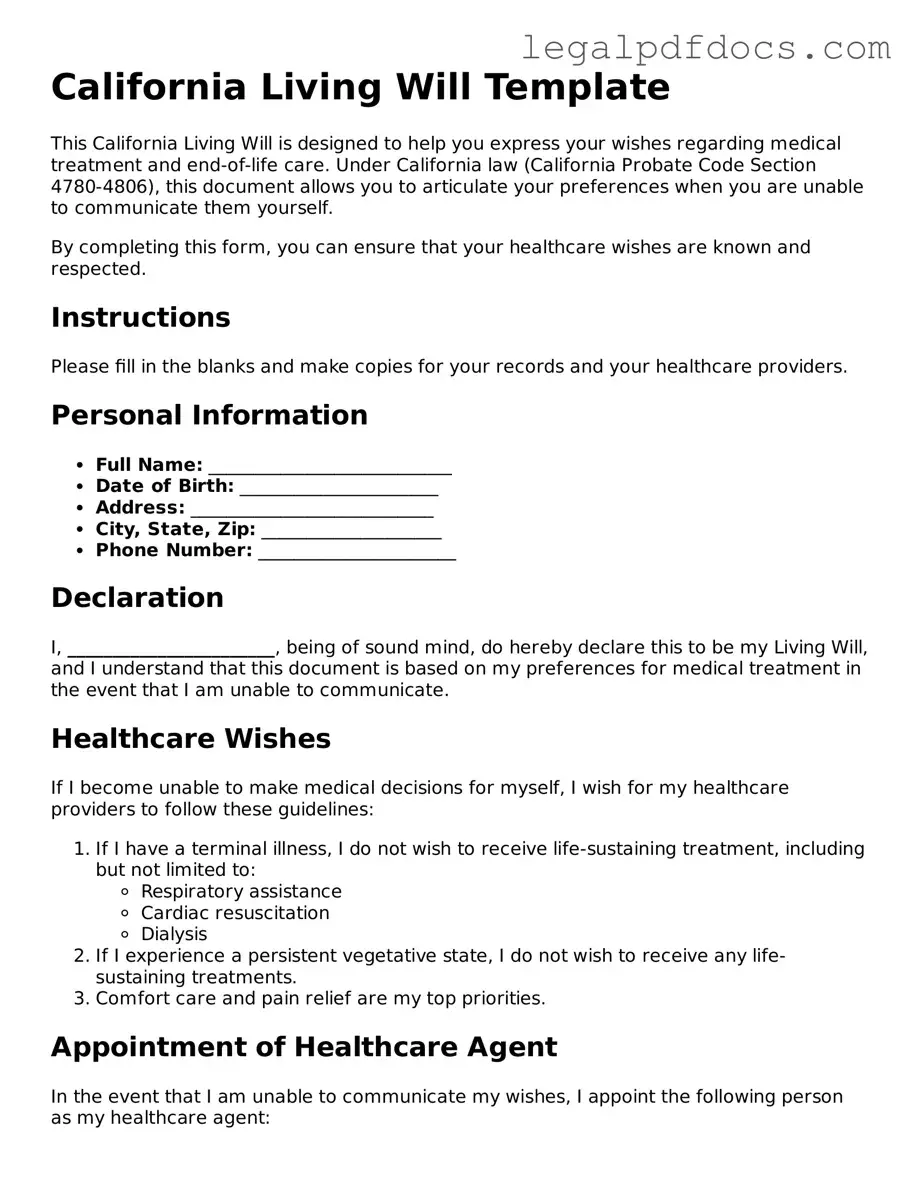Official Living Will Form for California
A California Living Will form is a legal document that outlines your wishes regarding medical treatment in case you become unable to communicate your preferences. This form allows you to express your desires for end-of-life care, ensuring that your choices are respected. It’s crucial to have this document in place to avoid confusion and ensure your wishes are honored. Fill out the form by clicking the button below.
Open Living Will Editor Here
